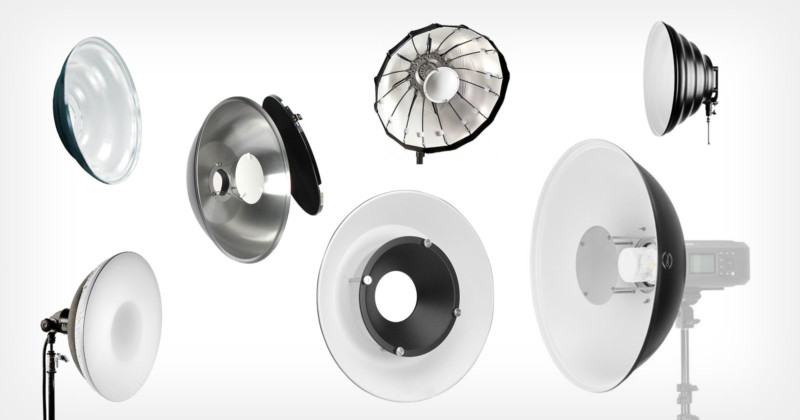
The beauty dish is one of the most commonly used light modifiers for beauty and portrait work, but being popular doesn’t mean that it’s an easy-to-use modifier without any quirks and intricacies. In fact, you can only harness the true magic of the beauty dish if you know the principles behind it inside-out. In this article, I will explain everything you need to know when using a beauty dish.
What Is It?
A beauty dish is a relatively small, often metal, reflector, that is very wide and short. A staple of every beauty dish is the deflector plate in the middle. Without it, you can’t call your modifier a beauty dish.
The shape of the dish is also very important. There are other modifiers that have the option of adding a deflector plate in the middle, however, they would not be categorized as a beauty dish. It is important to note that most beauty dishes are anywhere from 20-30” in diameter.
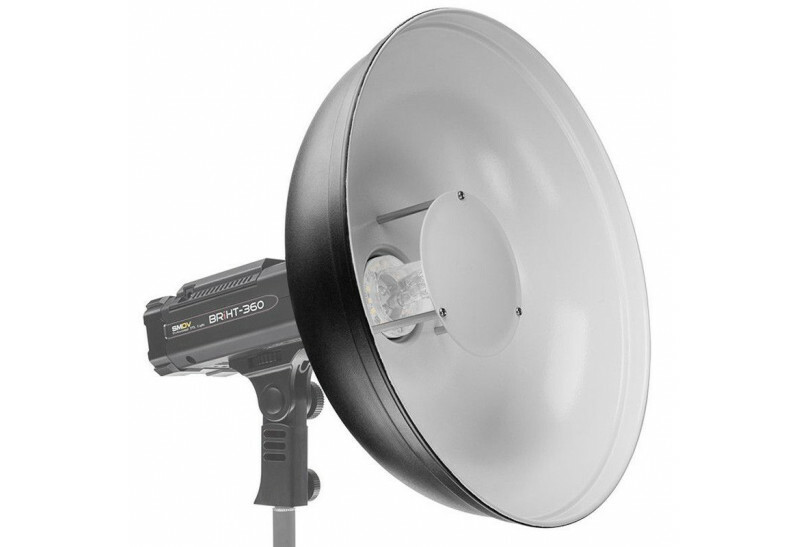
The shape of your dish is crucial, as the main task of this modifier is to reflect or bounce, light.
Types of Beauty Dishes
Beauty dishes come in two interiors: silver and white. As you can guess, a silver one will reflect light, while a white one will bounce it.
Read also: 11 Popular Light Modifiers Compared: Which One Is Right for You?
Silver
The less popular of the two, a silver beauty dish is very underrated in photography. Because the light is reflected by the specular silver interior it will produce a direct reflection. As a result, the light beam will have direction, produce more contrast, and have a 30-20 degree light spread. This is of course useful when your main goal is to bring out detail.
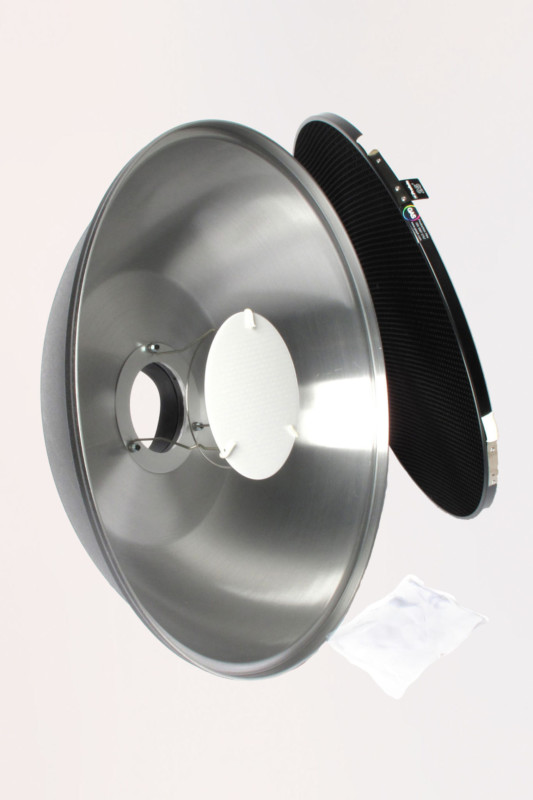
White
The white counterpart is loved by many photographers. The light is bounced instead of reflected. This produces diffuse reflection, which is a type of reflection where the light travels in multiple directions, as opposed to one indirect reflection. Diffused light that the dish produces will spread over an area of approximately 50-60 degrees and have less contrast. This will account for less detail brought out.
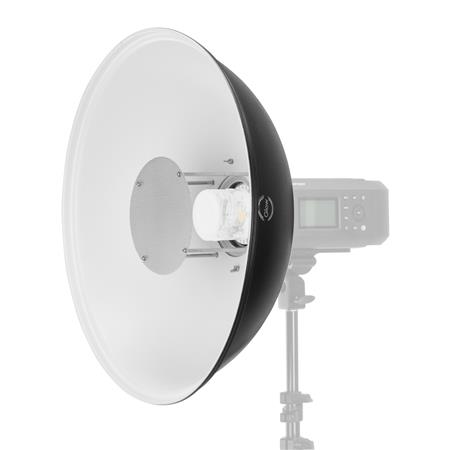
Accessories for the Beauty Dish
Grid
A grid will limit the light spread of the beauty dish. Commonly grids will be around 15-30 degrees. Although you can use a grid for both silver and white beauty dishes, there is little use for a grid on a silver dish. As you know, the silver interior produces a lot more direction, and hence a smaller light spread. Adding a grid will have little effect on an already thin beam of light. The rule of thumb is to use a grid on a white beauty dish as it has a much wider spread that can be narrowed down effectively. Importantly, as you make the light spread narrower contrast will increase.

Sock
Otherwise known as diffusion fabric, this will simply further diffuse the light. Many photographers who own a silver beauty dish put a sock over it to make the light more flattering to the skin. There are few uses for a sock on a white beauty dish in most applications.

Deflector Plates
Commonly the deflector plate is solid white, however, there are a few more options. Some companies make a frosted glass deflector panel for their beauty dishes. This will deflect some light, but also allow a bit to pass. Overall, this is a rarely used accessory, however, it is quite useful if you want to create more punch and get a slight hotspot in the middle of your light beam.
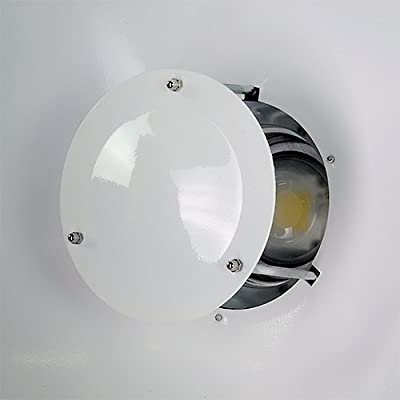
How Does it Work?
The principle behind every beauty dish is standard:
Light from the tube enters the modifier, hits the deflector plate, travels back, and fills the whole dish evenly.
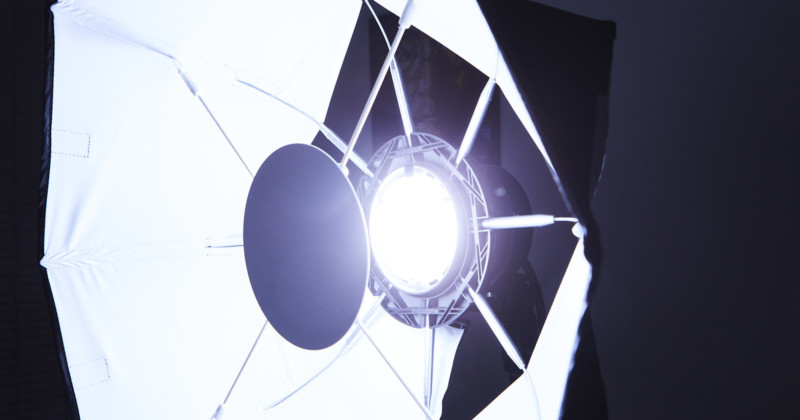
The deflector plate creates a soft spot in the middle. Here is how it looks:
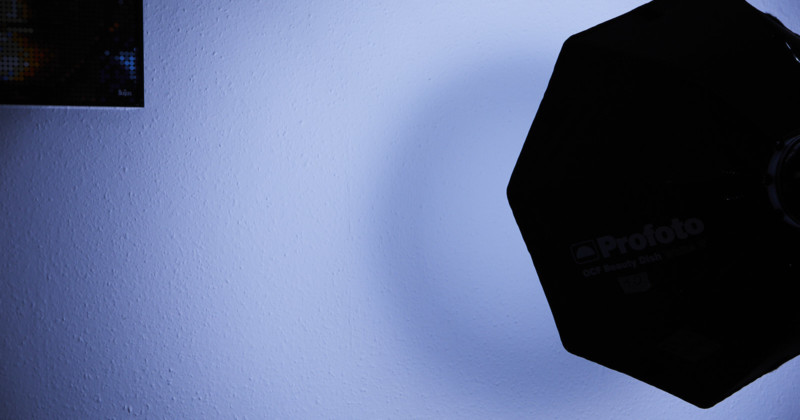
Ideally, you want to place your subject into that soft spot, that is where the light will have its magical semi-hard semi-soft quality. Technically, this is the shadow that is cast by the deflector plate. ON a silver beauty dish, this shadow will appear smaller, while on a white one it will be larger. This is significant as positioning the silver dish is crucial while a white one is more forgiving.
The light created as the result of this unique mechanism is somewhat soft, but has a punch to it and delivers great detail.
Possible Uses
Beauty Photography
The name suggests this clearly, so I won’t go into too much depth as there are thousands of tutorials. This is commonly used as part of a traditional beauty setup: the dish is positioned above the subject, a reflector is chosen to fill in the chin shadows, and a few background lights are used. My suggestion would be to experiment with the position of your beauty dish when approaching new beauty photos.
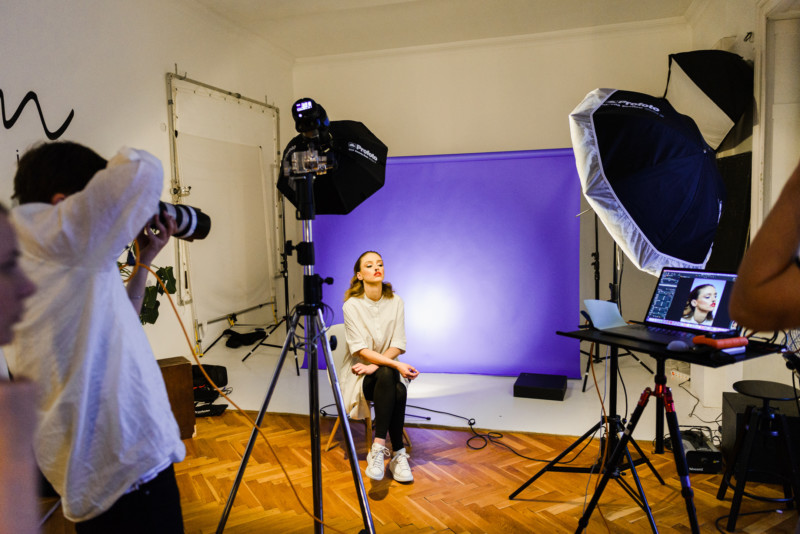
Portrait Photography
A collapsable beauty dish would be ideal for portraiture as it is very small and easy to take around. The beauty dish is most effective at relatively short distances, and for fairly tight shots. Lighting your whole subject with one dish will be very inefficient. However, if your portrait has the face filling much of the frame, by all means, use a beauty dish.
Sports Photography
One of my favorite sports photographers, Gary Land, loves to use a silver beauty dish for his sports work. This allows him to capture detail, sweat, and texture in athletes which is a look sought-after in the commercial world. The direction of light allows sports photographers to highlight certain parts of the body only.
Background Light
Abert Watson is known to use a beauty dish for a lot of his portrait work, this includes lighting backgrounds. 4 dishes will create even illumination on the background which will make it a clean white. Importantly, using a striplight will actually create a subtle gradient which is undesirable, especially if you’re shooting film.
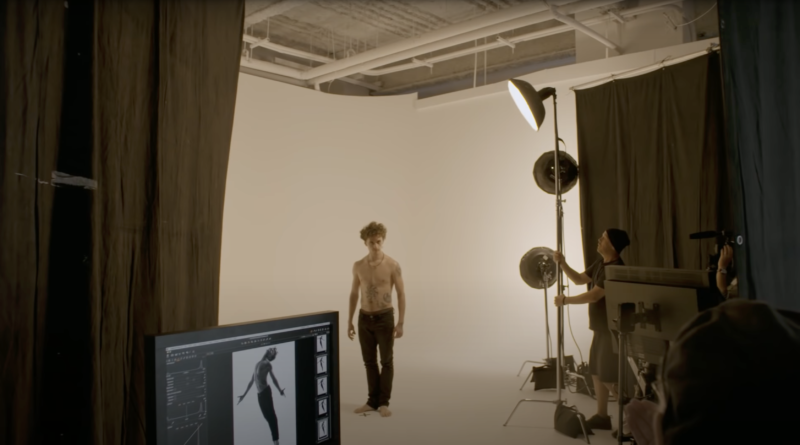
An Unusual Way to Use a Beauty Dish
Some beauty dishes have the option to remove the deflector plate, this is common with portable ones
Removing this plate will allow you to create a very hard light that is similar to sunlight. The effect would be similar to what the discontinued Bowens Sunlite does (by far the best way to replicate sunlight in the studio).
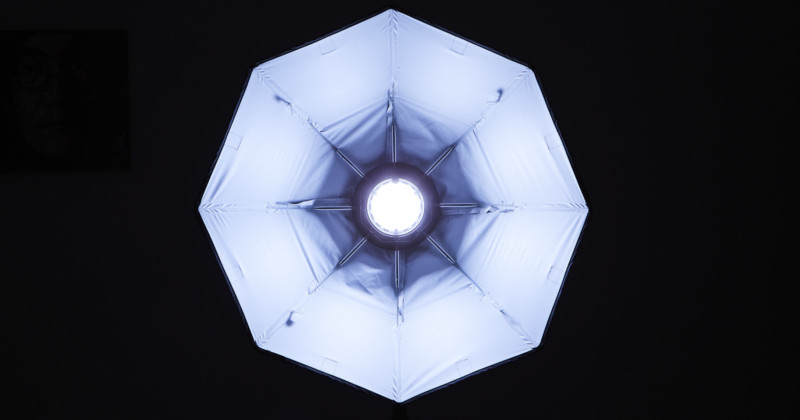
Recommended Beauty Dishes
There are a few brands that make beauty dishes: here are some that stand out to me.
Profoto OCF White Beauty Dish
This is the one I own and take on every shoot. It’s collapsable and quite durable. With the deflector removed and the diffusor on it doubles as a small octabox.
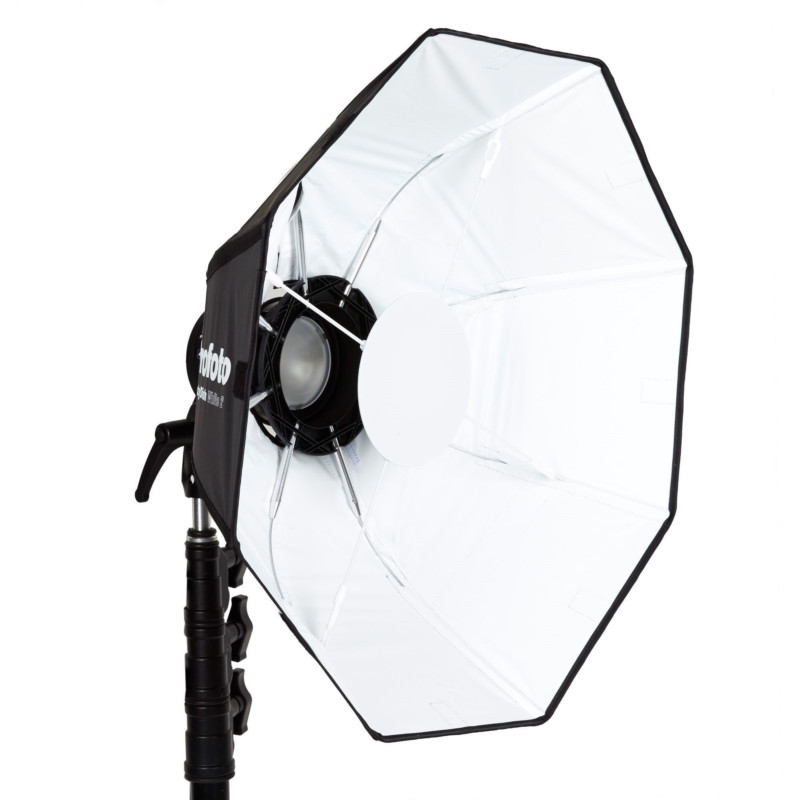
Mola Demi Beauty Dish
An expensive but slightly different light quality from other dishes, with its patented design it claims to be a lot more efficient than regular dishes.
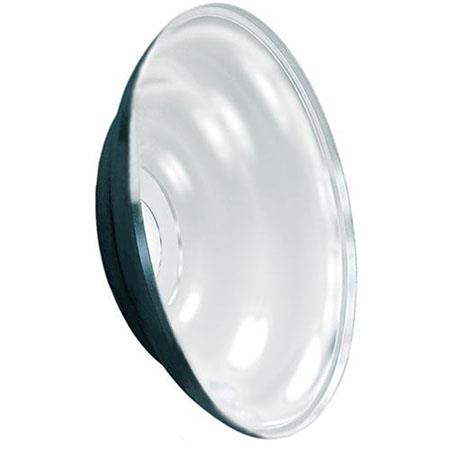
Glow White Beauty Dish
An inexpensive option that seems to be a popular choice and a great beginner’s modifier.
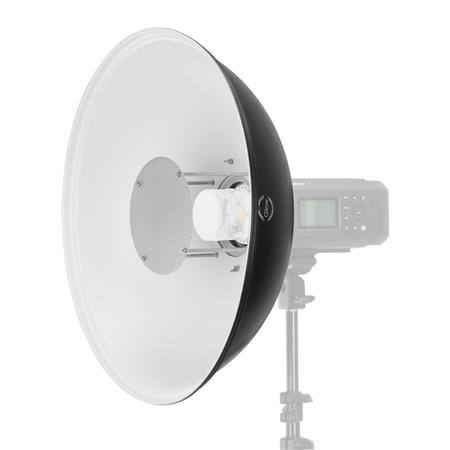
Closing Thoughts
There are countless ways to use something as popular as a beauty dish. It is now down to your creativity and artistic touch. Knowing the basic concepts in this article is certainly helpful to mastering the art of using light shaping tools. Don’t let the name fool you: a beauty dish is a modifier not only for beauty photography but for all genres.